This article is the second in our presentations about Parisian couture houses active today and how they came into being.
Pierre Balmain, founder, 1914-1982
Balmain was born in the town of Saint-Jean-de-Maurienne, in the Savoy region of France. His father sold textiles wholesale and his mother ran a fashion boutique. Despite his interest in fashion, his parents insisted he study architecture. Being stubborn, in 1932, Balmain began selling sketches to design houses while studying at a Parisian school of architecture. In 1934, he was hired by Edward Molyneaux. He spent four years there training, then was hired by Lucien Lelong in 1938. As with many couture houses, WWII disrupted this design team.
In 1941, Lelong hired Balmain as co-principle designer beside Christian Dior. The two worked together well, each helping the other’s work improve. Like Dior, Balmain’s designs used simple shapes with extensive understructures and refined materials.

Fashion Designer
(1914-1982)
Balmain left Lelong in 1945 to set up his own house. Within a few years, he established himself as an arbiter of elegance in couture’s post-war golden age. He developed a specialty for luxurious evening and cocktail wear that elevated him to a position, along with Dior and Jacques Fath, as one of the most influential designers after WWII. He is especially known for bringing the fur stole into fashion.
In 1948, Erik Mortensen joined the firm. Balmain and Mortensen collaborated until Balmain’s death in 1982.
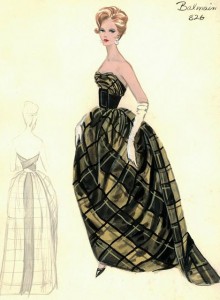
Balmain developed ready-to-wear, aimed particularly at the burgeoning American market, and signature perfumes, expanding his company through licensing agreements. In 1978 he sold the company to investors, but continued to work there until his death. (WWD Jun 25 1982: 22)
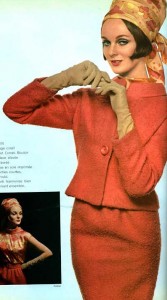
During the 1950s and ’60s, Balmain and Mortensen designed for many films and theatrical productions, and his list of regular clients included Marlene Dietrich, Ava Gardner, Katherine Hepburn, the Duchess of Windsor, and Queen Sirikit of Thailand.
After a long career, Pierre Balmain died of cancer in 1982.
FITDB-Oxford Art Online: Balmain
FITDB-Berg Fashion Library: Balmain
(The FIT proxy server makes it hard to give you links to specific articles. Use “Balmain” as the search term for either database.)
Erik Mortensen, Head Designer, 1982 – 1990
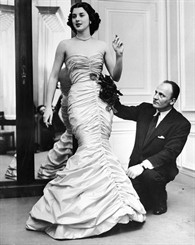
When Pierre Balmain died in 1982, Erik Mortensen had already been Balmain’s assistant and collaborator for nearly 40 years. Thus he was the obvious chief designer to pick up the reins of the house.
Mortensen trained with Holger Blum, one of Copenhagen’s most prominent couturiers. In 1948, he came to Paris and began working for Balmain. They worked well together, and continued as partners for the rest of Balmain’s life. He went on as sole designer for the house from 1982-1990 and his work has been the subject of several exhibitions on its own.
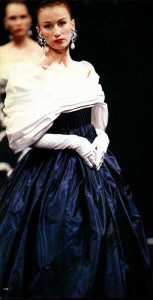
Mortensen won several Golden Thimble (issued by the Chambre Syndicale de la Couture Parisienne) awards for collections in the 1980s. His work centered around the original Balmain themes of simple lines, interesting shapes, and elegant materials.

Despite Mortensen’s critical success, his focus on traditional couture during a time of rapidly changing fashion rules lost the interest of the younger market.
In addition, multiple sales of the company and product mismanagement at the executive level left the House of Balmain in such dire financial straits by end of 1990 that the house announced the end of its couture line.
As an attempt to recapture the grandeur of the house’s heyday, the financial director replaced Mortensen with a younger designer. In support, the Chambre Syndicale agreed to allow them to show a smaller couture collection than required, out of respect for their prestigious couture legacy. (WWD, Mar 18 1991: 16 and Jul 1 1991: 4-5)
The firm Jean-Louis Sherrer recruited Mortensen from retirement to replace Jean-Louis Sherrer in 1992. He retired again in 1994, and died of chronic skin cancer. (WWD: June /1998 p15)
Great blog post on Balmain’s history
Another great blog post on Balmain
Hervé Pierre Braillard, Chief Designer 1990 – 1992
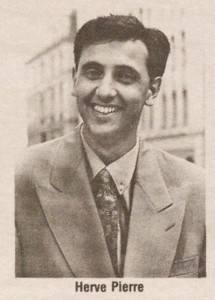
Herve Pierre Braillard, known best as Herve Pierre, had worked at Balmain since he was graduated from the Chambre Syndicale School of Couture in Paris. He began with an internship there, and by 1988, he was Erik Mortensen’s assistant. While he worked under Mortensen, the attelier directors began recommending Herve Pierre to the firm’s financial director for his sense of detail and skill with materials.
In 1990 the new owners retired Mortensen, and promoted Pierre, 25, to the title of chief designer. His first action was to hire Lars Nillson, a friend from the Chambre Syndicale, as his assistant.
Because of the house’s financial troubles, his first collection, in 1991, was half the size usually required. The Chambre Syndicale bent their rules on collection size to help revitalize the well-known couture house.
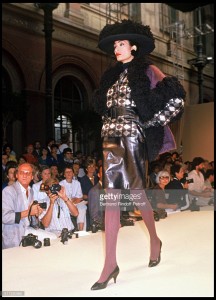
Fascinated with all the decorative arts, Pierre, described couture clothes as a “fantasy [that] has to do with the story they tell, why they [couture clothes] are cut in such a way or fitted another.” (WWD Nov 28 1990: 14)
In November 1992, the financial director (a different one from the 1990 troubles) replaced Braillard with the well-established designer Oscar de la Renta. (NYT Nov 17 1992: B11)
After he left Balmain, Pierre spent several years costuming ballets for the Opera de Paris and the Syndey Opera House. In 1995 he moved to the New York city. He has continued his work as the artist behind the name, working as design director for such industry stalwarts as Oscar de la Renta, Vera Wang, Bill Blass, and Carolina Herrera, for whom he now works.
Short bio of Herve Pierre as a costume designer
Oscar de la Renta, Head Designer 1993 – 2002
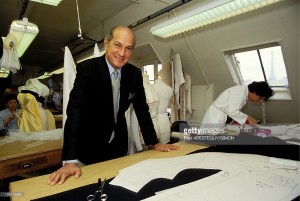
Born in the Dominican Republic, Oscar de la Renta went to art school, at first in the Dominican Republic, and then in Spain. He began sketching for couture houses in Madrid as a way to support himself through his studies.
In 1949 he was hired as an apprentice under Cristobal Balenciaga, master of shapes in cloth. Shortly thereafter, de la Renta moved to Paris, where he got a job with Antonio Castillo at Lanvin.
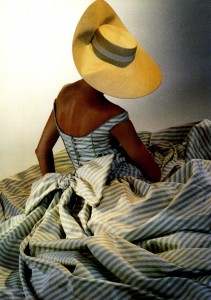
In 1962, de la Renta moved to New York to work for Elizabeth Arden. By 1965 he had moved to the Jane Derby Manufacturing company. Shortly thereafter, he bought the company and established it as his own ready-to-wear house. His work has always been known for its ladylike refinement, which has made him a frequent fashion choice of every first lady since Jackie Kennedy, as well as stars from Audrey Hepburn to Sarah Jessica Parker.
His work is ubiquitous on award-show red-carpet lines as well. By the end of his term at Balmain, de la Renta’s signature line had grown to nearly 50 million dollars per year in collection sales and an additional 600 million in licensed goods.

De la Renta was the first American (he became a US citizen in 1971) to be appointed chief designer at a Paris Couture house. Having come from a successful ready-to-wear business of his own, de la Renta was able to take the Balmain signature richness and elegance and expand upon it. His collections were successful both critically and financially, and drew such customers to his shows as Princess Marie Chantal of Greece, Alexandra von Furstenburg, Princess Furyal of Jordan, Danielle Steele, and Susan Gutfreund. (WWD Jul 8 2002: 2 and Jul 10 2002: 1,8-9)
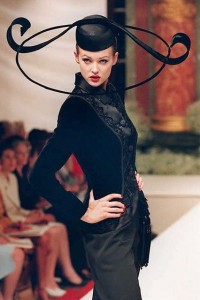
As well as the luxurious eveningwear the house had always been known for, de la Renta’s work established a reputation for smart, tasteful daywear. His sense of direction took the house from its financial crisis in the early 1990s back to the booming business of its post-war heyday. De la Renta left Balmain by choice, citing his recent back surgery and booming signature business as his reasons.
Oscar de la Renta is a fashion icon in his own right. Since his time at Balmain, he continued to design for his own line until he passed the reins of his command at his Spring 2015 show. He died of complications with cancer in October, 2014 at the age of 82.
FITDB: Oxford Art Online: de la Renta
Bush Presidential Center de la Renta retrospective
NYT Timeline of de la Renta’s career
NYT Tale of de la Renta and Clinton
NYT Slide show of de la Renta’s red carpet designs
Laurent Mercier, Artistic Director 2002
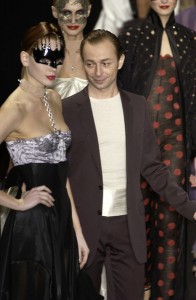
Laurent Mercier was born and raised in Eclepens, Switzerland. From a very young age he wanted to be a designer. After school, he completed a certificate of couture skills as well, and in 1986 he moved to Paris. From 1989 to 1999, Mercier worked for Jean-Paul Gaultier in France and Japan. During this time, he also consulted for other companies such as Escada, Natalie Acatrini, Morgan, and Crisca. He also has designed costumes for many music videos, movies, and stage performances.
In 1999 Mercier presented his own line under the label “Laurent Mercier Deluxe”. Despite critical acclaim and support by celebrities such as Madonna and Mario Testino, the tragedies of the September 11, 2001 terrorist attacks on New York cost him revenues from the US market and the line failed.
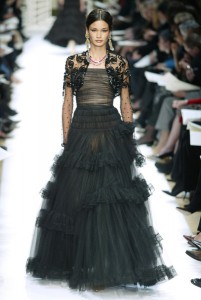
Around this time, the financial director at Balmain recruited Mercier to design the Balmain ready-to-wear collection, after Gils Dufour was fired. When Oscar de la Renta left the company, Mercier was given control over the couture design as well. Directed to modernize the image of the venerable couture house, his collection for Spring 2003 took a completely different direction from de la Renta’s understated elegance. Mercier’s clothes were expensive, flirty, and aimed at the millenial version of international jetsetter, not the time-honored couture client. This was too radical a change for the financiers, and Mercier left in 2003.
Laurent Mercier presented his own collections from 2003-2005, then proceeded to work with a number of prominent fashion schools, including the Paris College of Art and the Bunka Fashion Institute in Japan. He takes what projects interest him, including a lot of theatrical and music tour design. Lenny Kravitz, Nina Hagen, Shazz, and Sylvie Vartan are among his regular private customers.
Christophe Lebourg, Creative Director 2003 – 2006
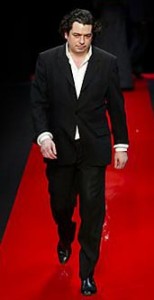
Born in Paris, Christophe Lebourg was a driven young man. He began drawing comic characters because he enjoyed dressing them. He dropped out of school at 16 and went to the Chambre Syndicale de la Haute Couture. By age 21, he’d worked for Claude Montana, Yohji Yamamoto, and designed his own line under the alias Dimitrios. He then took over as chief designer at Callaghan, an Italian firm. In 1984 he premiered his first line under his own name, produced by Callaghan’s parent company, Zamasport.
His signature line closed by 1993, but he continued to design for Callaghan, Cacherel, and Rodier. By 2003, Lebourg was chosen to replace Mercier when he left as ready-to-wear designer for Balmain.
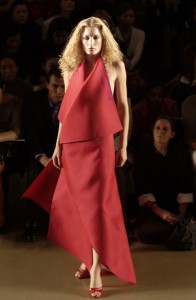
Always fascinated by fashion as an extension of art and film, Lebourg sought to update Balmain with homage to the master’s minimalism and elegance. (WWD Oct 6 2003: 14)
Although Lebourg worked to revamp the house’s boutique stores (WWD Mar 1 2004: 18) and ready-to-wear, both the press and the customer remained dubious. Despite having canceled their July 2003 couture show, the company filed for bankruptcy protection in June of 2004, and was given six months to restructure. Sales did not improve, and he, too, was invited to leave in the fall of 2005.
Lebourg currently works as the creative consultant for Factory30 and La Compagnie in Nimes, France. He also has a Tumblr page with his recent photograpy.
Chrisophe Decarnin, Creative Director 2006 – 2011
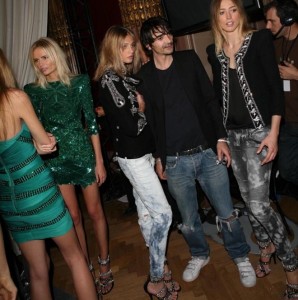 Christophe Decarnin was born in Le Touquet, France. When he graduated from L’Ecole Superiere des Arts et Techniques de la Mode, he was quickly hired by Paco Rabanne, where he eventually became the Art Director.
Christophe Decarnin was born in Le Touquet, France. When he graduated from L’Ecole Superiere des Arts et Techniques de la Mode, he was quickly hired by Paco Rabanne, where he eventually became the Art Director.
In late 2005, Decarnin was hired away from Rabanne by Balmain’s financial director. He produced his first collection in February 2006. It was immediately apparent that Decarnin’s target customers were not traditional couture ladies, but rather, the international jet set and pop stars (movies, music, TV, internet) who dominate pop culture today the way that film stars and socialites did in Balmain’s day. Decarnin’s Balmain aimed for a much younger look, showing many short and form fitting dresses with a couture attention to detail, but WWD still found it lacking depth and the NYT thought it shocking.

However, he quickly began to make a dent in Hollywood, always the symbiotic cousin of La Chambre Syndicale. Actresses Audrey Tautou and Sophia Coppola wore his work on subsequent red carpets and WWD took note. (WWD May 19 2006: 14)
Decarnin’s vision was very different from the previous design directors. He enjoyed that, he said. “Balmain had very little image when I arrived. I liked that situation. I allows me to do what I want.” Decarnin’s approach was a more contemporary “melange of couture savoir faire and grittier rock ‘n roll glamour.” (WWD Sep 28 2006: 13)
“‘I want my clothes to be exclusive but not too exclusive’, Decarnin explains. ‘Always short skirts, a very modern silhouette, matching the way of life of girls today-they want to move in their clothes.’” (Vogue Oct 1 2007: 256) One way that Decarnin gave his clothes the aura of exclusivity was to raise the house’s price points, and specialize in the glamorous (with its connotation of ‘oh, so slightly trashy’) “must-have” item. This approach launched “Balmania”on social-media and celebrity outlets.
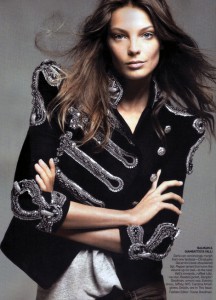
Cathy Horyn of the NYT and other editors had long considered the house so “dusty that between 2001 and 2006, Vogue Runway [nee Style.com] simply does not have any collection reviews or photos [of Balmain].” (The Fashion Law Oct 21 2015, see link below) This is true of Vogue, Harper’s Bazaar,Vogue Paris, Collezioni Donna and many of the other magazines we have in PERS. Decarnin’s flashy strategy put the House of Balmain back on the map both with pop-culture and with the fashion press.
Decarnin and the financial director finally went their separate ways after Balmain’s fall 2011 show. Besides Decarnin’s chronic trouble with depression, the two had strong differences of opinion about the direction of the house. (WWD Apr 6 2011: 2) However, Decarnin continues to be credited widely as the man who made Balmain “the label of the supercool girls.” (TFL, see link below)
Thoughts about Decarnin’s influence on Balmain
Decarnin is currently thought to be part of the design team behind the Paris label Faith Connection, but the company prefers to keep its team a mystery.
Oliver Rousteing, Creative Director 2011 – Current

Olivier Rousteing was raised in Bordeaux, France. He finished high school early, and quickly dropped out of the law school his parents wanted him to attend. Instead, he attended L’Ecole Superiere des Arts et Techniques de la Mode, then took off to Rome at age 18. He moved to work for Roberto Cavalli in Tuscany, staying for five years, before returning to France to run Christophe Descarnin’s studio in 2009. (Vogue Dec 1 2011: 171, 172, 176) (WWD Apr 27 2011: 3)
Routsteing’s direction for the design house fed off the global youth markets (especially the expanding markets in Asia) and rock-star glitter of Descarnin’s Balmain, but added back in some of the original designer’s minimalism and rich materials. As the first person of color to take over a grand old couture house, he has consciously shaped his aesthetic and his persona to embrace a more global and colorful customer, in all senses of the terms.
As with Descarnin, the fashion press continues to show confusion while Rousteing pays as much homage to Las Vegas than as Paris. But Balmania continues: Rousteing’s shows have become so crowded that French police have to keep the sidewalks clear. Rousteing reinvents his pop-culture status daily by savvy social media use: posting selfies with partying friends in between Balmain publicity shots and magazine covers. By his spring 2016 show, he had 1.3 million followers on Instagram, far and away the most of any couture house. (NYT Oct 1 2015: B14) Still humble, however, he “is quick to point out that his cyber presence is less a reflection of his life than a perfected version of it.” (Out Apr 2 2015 9:30)

Rousteing has close ties with the (TV celebrity) Kardashian family. So close that he chose Kim Kardashian-West and husband Kayne West as the focus of the spring 2015 Balmain print ad campaign. The Kardashian family wears Balmain almost exclusively to red carpet events, and baby North West has been photographed in custom Balmain jackets as well.
An interview with Rousteing about his muse, Kim
Rousteing is friends with many names in the entertainment and fashion business, including Iman, Rhihanna, Beyonce’, Jada Pinkett and Will Smith, Naomi Campbell, Mary J. Blige, and Cara Delevigne, often speaking of his attraction to strong women.
Rousteing as a woman’s best friend

The Balmain brand struggled to find relevance to the millennial world until Descarnin and Rousteing redirected it towards popular culture. Fashion writers remain dubious about this style reboot, wondering if the new and glitzy popularity came from the quality of their design, or from the celebrity endorsements and “It” brand popularity itself.
The fashion press continues to question what has changed. Vogue writer Jessica Iredale asks if “Is fashion, and culture at large at sea in an era of bad taste?” only to reply herself that “the question itself is practically in poor taste in 2015, the age of ultimate inclusiveness, where almost everything that attracts attention is deemed worthy of it.” (WWD Nov 18 2015: 58-59) Rousteing sees himself as a role model in making that acceptance part of the status quo.
“Look at perfume campaigns,” he says. “You never see black girls, and if you do, they use Photoshop so much that they almost look white. It’s just wrong. People post on my Instagram that they are so happy to see black boys and black girls. I’m happy that they see it and don’t think that fashion belongs to white people.” (Out Apr 2 2015 9:30) He’s acted on this, changing couture’s fashion image and customers are responding worldwide. “He said, ‘I’m mixed race. I want to mix ideas, I want to mix cultures.”

A lot of Rousteing’s appeal is precisely that he’s taken the rarified air of the couture house, symbol of white high culture, and made it work for the twenty-first century, where the world’s (rich) people have begun to blend. He hastened this class blending by joining fashion chain H&M’s designer collaborations in November, 2015, highlighting their motto “Fashion for All”.
But taste is subjective, as Simon Doonan says. “It is an illusion, something that people came up with historically as a form of snobbery. I don’t think it’s relevant any more.” (WWD Nov 18 2015: 58-59) Of course, it doesn’t hurt that Rousteing himself is beautiful and selfies well.
Rousteing talks about race and Instagram
Rousteing’s spring 2015 ad campaign
Just a reminder that you can easily get to the New York Times, Vogue, and WWD articles I’ve listed here through the FIT Library Databases Page:
We also have many books and other visual resources that discuss Balmain in depth. A simple StyleCat search will direct you to them.
Every creative endeavor must reinvent itself constantly to remain relevant. We hope you enjoyed the story of the revered couture House of Balmain doing just that.
Beth McMahon and Shannen Lindsey
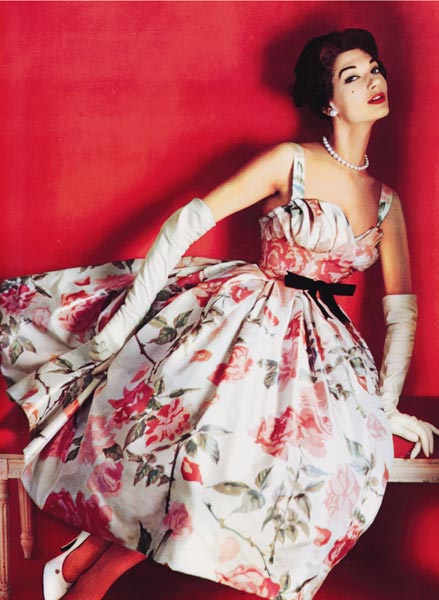
Comments
One response to “Balmain: From French Refinement to Global Glitz”
Womens Fashion has evolved enormously since the human being started fabric production and adapting to different geographical conditions and cultures respectively.
With the advent of traditional handlooms to the Most modern Rapier and Airjet looms along with fabric coloration Technology, the Fashion designers has taken this to an extreme level where the things are unpredictable and unexpected.